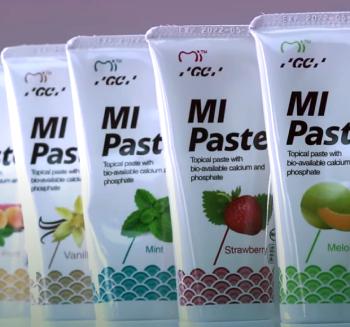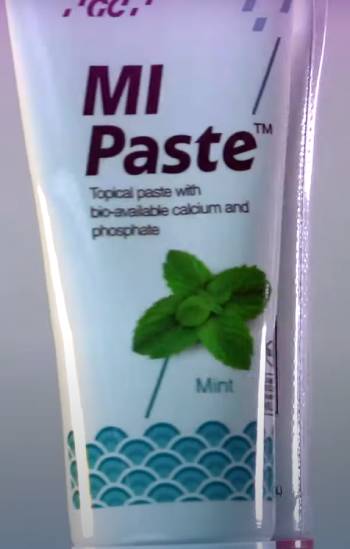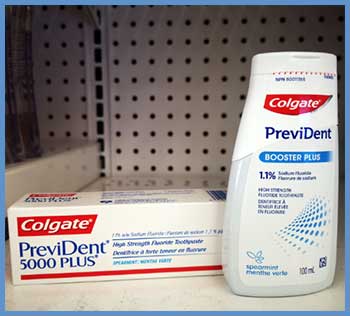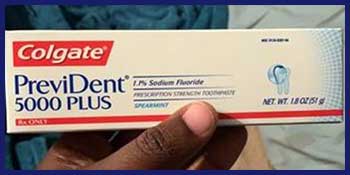As someone who’s always been diligent about oral health, I’ve spent countless hours researching the best products to keep my teeth strong and sensitivity at bay. When my dentist mentioned MI Paste and PreviDent, I was intrigued but overwhelmed by the choice.
Which one’s better for my needs? In this article, I’ll walk you through my exploration of MI Paste and PreviDent, comparing their key features, pros, and cons in a conversational, real-world way.
My goal is to help you make an informed decision about these dental care powerhouses, based on my analytical journey.
A Brief Comparison Table
| Feature | MI Paste | PreviDent |
| Active Ingredient | Recaldent (CPP-ACP) | 1.1% Sodium Fluoride |
| Primary Use | Remineralization, sensitivity relief, dry mouth | Cavity prevention, enamel strengthening |
| Prescription Required | No (MI Paste), Yes (MI Paste Plus) | Yes |
| Application Method | Topical, applied with finger or tray | Toothpaste, brushed twice daily |
| Flavors | Mint, Vanilla, Strawberry, Melon, Tutti-Frutti | Spearmint, Fruitastic, Sensitive |
| Target Audience | Dry mouth, sensitivity, fluoride-free needs | High caries risk, enamel protection |
| Availability | Over-the-counter (except MI Paste Plus) | Prescription only |
| Cost | $20–$30 per tube | $15–$25 per tube |
Understanding MI Paste: My First Impression

When I first heard about MI Paste, I was curious about its unique approach.
Unlike traditional toothpastes, MI Paste uses Recaldent, a milk-derived protein called casein phosphopeptide-amorphous calcium phosphate (CPP-ACP).
It’s designed to release calcium and phosphate ions into your teeth, helping to remineralize enamel and soothe sensitivity.
I was drawn to its promise of being a gentler, fluoride-free option for those with specific needs, like dry mouth or sensitivity from braces.
I tried MI Paste Original, which you can buy over-the-counter, and noticed its creamy texture. You apply it by smearing a small amount on your teeth with a clean finger or a dental tray, letting it sit for a few minutes before rinsing. It’s not a toothpaste, which threw me off at first—I’m used to brushing and done!
The flavors, like mint and strawberry, made the experience pleasant, almost like a dessert for my teeth. MI Paste Plus, which includes a small amount of fluoride, requires a prescription, but I stuck with the original for its simplicity.
What I loved immediately was how it targeted my occasional sensitivity, especially after whitening treatments. My teeth felt smoother, and that zing from cold drinks seemed less intense.
It’s marketed for people with dry mouth (xerostomia), those undergoing orthodontic treatment, or anyone seeking a fluoride-free remineralization option. The idea of “feeding” my enamel calcium and phosphate felt like giving my teeth a nutrient boost, which was a refreshing change from fluoride-heavy products.
Breaking Down The Pros And Cons of MI Paste
Let’s talk about what makes MI Paste stand out, and where it might fall short. I’ve spent months using it, and here’s what I found:
Pros of MI Paste

- Gentle Remineralization: The Recaldent technology delivers calcium and phosphate directly to your enamel, rebuilding it naturally. I noticed less sensitivity after a week, especially around my gumline where recession was an issue.
- Dry Mouth Relief: If you struggle with dry mouth, MI Paste is a game-changer. It creates a moisturizing effect, making my mouth feel less parched, especially at night.
- Fluoride-Free Option: For those wary of fluoride, MI Paste Original is a safe bet. I appreciated having a choice, especially when I wanted to mix things up.
- Variety of Flavors: With options like melon and tutti-frutti, it’s almost fun to use. My kids loved the strawberry flavor when I let them try it.
- Easy Application: You can use it with a finger or tray, making it versatile. I found it quick to apply before bed, fitting easily into my routine.
Cons of MI Paste
- Not a Toothpaste: You still need a separate toothpaste for cleaning, which adds a step. I sometimes forgot to apply MI Paste after brushing, which was a hassle.
- Costly for Regular Use: At $20–$30 per tube, it’s pricier than standard toothpastes. I had to budget carefully to keep it in my routine.
- Limited Cavity Protection: Without fluoride (in the original version), it’s not as effective at preventing cavities. I worried about this given my cavity-prone history.
- Milk Protein Allergy Risk: Since Recaldent is milk-derived, it’s not suitable for those with dairy allergies. I’m fine, but this could be a dealbreaker for some.
- Prescription for Plus Version: MI Paste Plus, with fluoride, requires a dentist’s approval, which adds a step if you want that extra protection.
PreviDent: The Heavy-Duty Fluoride Champion

Then there’s PreviDent, specifically PreviDent 5000 Plus, which my dentist recommended when I mentioned my history of cavities.
This is a prescription-only toothpaste with a hefty 1.1% sodium fluoride concentration—four times stronger than over-the-counter toothpastes.
It’s designed for people at high risk for cavities, like me, or those needing serious enamel strengthening.
Brushing with it twice a day felt familiar, unlike MI Paste’s unique application process.
The spearmint flavor was sharp and refreshing, though I also tried the fruitastic version, which was a fun twist. PreviDent is all about cavity prevention and enamel fortification. It forms a protective barrier on your teeth, helping them resist acid attacks from sugary snacks or plaque.
I noticed my teeth felt “harder” after a few weeks, and my dentist confirmed my enamel was in better shape during my last checkup. It’s a no-nonsense product—brush, spit, and you’re done. But it’s not for everyone; the high fluoride content means it’s strictly for those who need it, as prescribed by a dentist.
PreviDent’s Strengths and Weaknesses
PreviDent felt like the heavyweight contender in my dental care lineup. Here’s how it stacks up:
Pros of PreviDent
- Powerful Cavity Protection: The 1.1% sodium fluoride is a beast at preventing cavities. My dentist was thrilled with my reduced caries risk after six months.
- Enamel Strengthening: It makes your teeth feel like fortresses. I could tell my enamel was tougher, especially after acidic foods like orange juice.
- Simple to Use: As a toothpaste, it fits seamlessly into your brushing routine. No extra steps, which I appreciated on busy mornings.
- Multiple Variants: Options like PreviDent 5000 Sensitive and Dry Mouth cater to specific needs. I tried the Sensitive version and found it gentler on my gums.
- Dentist-Approved: Its prescription status gave me confidence—it’s a product professionals trust for high-risk patients like me.
Cons of PreviDent
- Prescription Only: You can’t just grab it off the shelf. I had to schedule a dentist visit, which was a minor inconvenience.
- High Fluoride Concerns: Too much fluoride can lead to fluorosis in kids or other issues if misused. I was careful to follow my dentist’s instructions.
- Taste Can Be Strong: The spearmint flavor was intense for me at first, and some find it medicinal. It took a week to get used to it.
- Not for Sensitivity Alone: While effective for cavities, it’s not specifically designed for sensitivity relief. I still needed MI Paste for that.
- Cost: At $15–$25 per tube, it’s not cheap, especially since insurance doesn’t always cover it. I felt the pinch when refilling.
How They Work: A Side-by-Side Analysis

Using both products gave me a clear sense of their differences.
MI Paste works by supplying calcium and phosphate to rebuild enamel naturally, which is great for sensitivity and early-stage demineralization.
It’s like giving your teeth a nutrient shot, helping them recover from acid wear or whitening. PreviDent, on the other hand, relies on fluoride to create a mineral barrier, making your enamel resistant to decay. It’s a proactive shield, while MI Paste is more restorative.
I found MI Paste ideal for immediate sensitivity relief, like after eating ice cream or drinking coffee. It’s also a go-to for dry mouth, which I occasionally experience due to medications. PreviDent, however, was my long-term strategy for cavity prevention.
I noticed fewer new cavities at my checkups, which was a huge win given my history. The catch? MI Paste requires an extra step in your routine, while PreviDent is a one-and-done toothpaste. Your choice depends on whether you prioritize sensitivity relief or cavity protection.
My Experience With Application And Routine
Applying MI Paste was a new experience for me. I’d brush my teeth, then smear a pea-sized amount on my finger and rub it over my teeth. Sometimes I’d use a dental tray for deeper penetration, leaving it on for three minutes before rinsing.
It felt odd at first—not brushing felt incomplete—but I got the hang of it. The creamy texture and sweet flavors made it enjoyable, almost like a treat. I used it at night, which helped with my dry mouth symptoms.
PreviDent was straightforward: brush for two minutes, spit, and avoid eating or drinking for 30 minutes. It replaced my regular toothpaste, so it didn’t disrupt my routine. The strong fluoride content made me feel like I was armoring my teeth against decay.
However, I sometimes missed MI Paste’s soothing effect on sensitivity, so I occasionally alternated them—PreviDent in the morning, MI Paste at night. This combo worked well, but it required planning and commitment.
Who Should Use MI Paste?
MI Paste shines for specific groups. If you have dry mouth from medications, Sjogren’s syndrome, or radiation therapy, it’s a lifesaver. The calcium and phosphate help compensate for reduced saliva, which naturally remineralizes teeth.
I also recommend it for people with braces or aligners, as it soothes irritation and strengthens enamel around brackets. If you’re sensitive to fluoride or prefer a natural approach, MI Paste Original is perfect. I found it especially helpful post-whitening, when my teeth were extra sensitive.
However, if cavities are your main concern, MI Paste alone might not cut it. Without fluoride (unless you use MI Paste Plus), it’s less effective at preventing decay. I’d suggest it as a complementary product rather than a standalone solution for those with high caries risk.
Who Should Use PreviDent?
PreviDent is for anyone battling frequent cavities or weak enamel. My dentist prescribed it because I had a few fillings in my 20s, and I wanted to avoid more. It’s ideal for people with a high caries risk, such as those with poor oral hygiene, a sugary diet, or genetic predisposition to decay.
The Sensitive and Dry Mouth variants also cater to specific needs, though they’re still fluoride-focused.
If sensitivity is your primary issue, PreviDent might not be enough on its own. I found it less effective for that sharp pain from cold drinks compared to MI Paste. Also, kids under six should avoid it due to the high fluoride content, which can cause fluorosis if swallowed.
Combining MI Paste And PreviDent: My Experiment
Curious about maximizing benefits, I tried using both products together. My routine was PreviDent in the morning for cavity protection and MI Paste at night for sensitivity and dry mouth relief. It worked surprisingly well.
The fluoride from PreviDent strengthened my enamel, while MI Paste soothed my gums and kept my mouth hydrated. My dentist noticed improved enamel health and fewer sensitivity complaints at my next visit.
The downside? It’s expensive and time-consuming to use both. I had to be disciplined about applying MI Paste after brushing, and the combined cost of $40–$50 a month stung. Still, for someone like me with both sensitivity and cavity concerns, it was worth the investment.
Cost and Accessibility: What I Learned
Cost was a big factor in my decision. MI Paste costs $20–$30 per 40g tube, and a tube lasted me about a month with daily use. It’s widely available online or at pharmacies, except for MI Paste Plus, which needs a prescription.
PreviDent, at $15–$25 per 100g tube, was slightly cheaper but required a dentist’s script, which meant an extra visit or call. Insurance sometimes covered PreviDent, but not always, so I had to budget carefully.
Accessibility-wise, MI Paste Original wins for being over-the-counter. PreviDent’s prescription requirement was a hassle, especially when I ran out unexpectedly. I’d recommend checking with your dentist about samples or discounts to offset costs.
Which One’s Right For You?
After months of testing both, I realized there’s no one-size-fits-all answer. MI Paste is my go-to for sensitivity and dry mouth, especially when I want a fluoride-free option. Its gentle, restorative approach feels like pampering my teeth.
PreviDent, however, is my heavy hitter for cavity prevention, giving me confidence that my enamel is battle-ready. If you’re like me, with multiple dental concerns, using both might be the ultimate strategy, though it requires commitment and cash.
Your choice depends on your needs. Struggling with dry mouth or sensitivity? Try MI Paste. Prone to cavities? PreviDent’s your best bet. Talk to your dentist to tailor the choice to your oral health. For me, combining them gave me the best of both worlds, and I’m sticking with it for now.
Frequently Asked Questions (FAQ)
No, MI Paste uses Recaldent (CPP-ACP) for remineralization and sensitivity relief, while PreviDent is a fluoride-based toothpaste for cavity prevention.
Tooth Mousse or Clinpro 5000 (with calcium phosphate) are similar, offering remineralization but with different formulations.
Colgate Gel-Kam or Clinpro 5000, both high-fluoride prescription toothpastes, are comparable for cavity protection.
Yes, I found it effective for sensitivity and dry mouth relief, though results vary based on consistent use and individual needs.
Conclusion: Your Path To Healthier Teeth
Navigating the world of dental care can feel overwhelming, but choosing between MI Paste and PreviDent doesn’t have to be. I’ve shared my journey to help you understand their strengths—MI Paste for soothing sensitivity and dry mouth, PreviDent for battling cavities.
Whether you pick one or combine them like I did, talk to your dentist to find what fits your smile. You deserve a confident, healthy grin, and I hope my experience guides you toward the right choice.
